Recently there was a discussion on this site about the Reformed tradition’s understanding of the real presence. Russ Warren was criticized for his explanation that in the Eucharist we ascend to heaven and there mystically feed on Christ’s body and blood. He was trying to show how the Reformed tradition doesn’t hold to a memorialist view of the Lord’s Supper but to the more “traditional” understanding of the real presence. In response to the criticism that his view was Nestorian, he counters: “I’m not sure how Christ being “locally” in heaven is such a problem.”
Here’s what he wrote on 15 April 2011:
I’m not sure how Christ being “locally” in heaven is such a problem. Since we (to use Schmemman’s language) “ascend to heaven” when we worship, we are where Christ “locally” is: He makes that hypostatically united presence known to us in the Reading of the Scriptures and the Eucharist (among other ways, here, I gather, is where the Orthodox understanding of icons really comes into its own). Since we are with the physical and spiritual presence of Christ, why is it such a jump to say that the bread and wine are the Body and the Blood? There doesn’t seem to be anything Nestorian about it (unless I’m completely misunderstanding). We partake of Christ the Host, the Victim and the Victor, really, truly, actually, because we are in heaven — seated with Him. At least from my vantage point, Calvin doesn’t seem to be far off here — nor particularly unorthodox. (bold added)
In a follow up comment he referenced a posting: “The Reality of Worship” on his blog Withdrawals of a Theological Junkie. I believe his presentation of the Reformed understanding of the real presence is balanced but I question his assumption that it is the same as the early church. What I found striking about Warren’s explanation in his blog is the way Platonic dualism framed his theology and world view which led me to write up this blog posting than just bury it in the comment thread. What I want to do here is discuss the Platonic dualism that seems to underlie the Reformed understanding of the real presence in the Eucharist and show how it is at odds with historic Orthodoxy.
The way Warren frames his understanding of worship contains clear indications of a Platonic dualism. This becomes more obvious if his views are presented in bullet points:
- God is eternal and “dwells outside the constraints and bounds of time;”
- “We are in time” and for that reason cannot always perceive the reality of the Kingdom of God;
- We enter the Kingdom of God through baptism and faith;
- We “transcend earthly, time-bound reality and enter into God’s Kingdom” through worship;
- We are seated with Christ in the heavenly places through worship;
- “This means that whenever we enter into worship, we are entering the timeless, eternal state of the Kingdom….“
- Through the Eucharist we are “partaking of the very event — which is both eternal and time-bound to ca. AD 30.”
Russ Warren’s opposition of eternity vs. time bears a striking resemblance to Plato’s theory of Forms: the world of senses, i.e., the sensible world we inhabit comprise of mere copies derived from the archetypal world of Forms. In the parable of the Cave Socrates alluded to the two realities and to philosophical reflection as a means for escaping the world of shadows and echoes to the eternal world of Forms.
Something similar to Socrates’ Cave can be seen in Protestantism’s emphasis on the profound gap that separates us from God. It is grounded in ontology (God’s infinity) and morality (God’s infinite goodness and man’s utter depravity). The moral gap is resolved by Christ’s atoning death on the cross for our sins. The ontological gap is bridged primarily by the divinely inspired Scriptures and faith in Christ. There is a striking similarity between Socrates’ philosophical reflection and Protestantism’s sola fide (by faith alone), that is, the reliance on pure thought. The notion of pure thought is especially evident in the Protestant understanding of the sacraments as outward signs of an inward grace and that it is the inward grace that saves us, not the outward ritual.. The Reformed unease with the idea of grace bearing matter underlies their denial of a localized real presence in the Eucharist.
This denial of a local presence marks a break from the ancient church’s understanding of the Eucharist and will be discussed in more detail. But before proceeding, two questions need to be addressed: (1) What is the Reformed understanding of the real presence? and (2) Did Calvin hold to a Platonic dualism?
The Reformed Understanding of the Real Presence
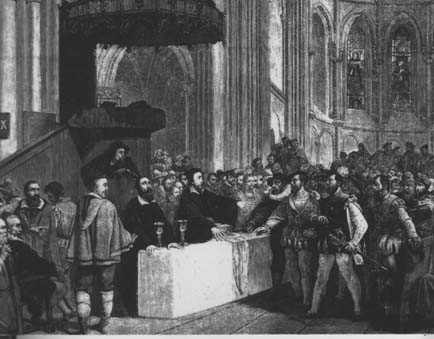
Lord’s Supper Celebrated in Calvin’s Geneva
One of the clearest exposition of the Reformed understanding of the real presence can be found in John Williamson Nevin’s The Mystical Presence. In it Nevin affirmed the real presence, while rejecting a localized real presence in the Eucharist (Mystical Presence 1966:310, 314, 316).
He wrote:
…the Reformed Church taught that the participation of Christ’s flesh and blood in the Lord’s Supper is spiritual only, and in no sense corporal. The idea of a local presence in the case was utterly rejected. …. The manducation of it is not oral, but only by faith. (Mystical Presence 1966:37-38; italics in original; bold added)
In another place, Nevin stresses it is “only by the soul” we receive Christ’s body and blood in the Eucharist (Mystical Presence 1966:274). Calvin likewise was averse to any understanding of a localized real presence in connection with the Eucharist (Institutes 4.17.12, 1960:1372-1373).; he saw such an understanding as resulting in Christ being “fastened,” “enclosed,” or “circumscribed” by the bread and wine (Institutes 4.17.19, 1960:1381). Probably the clearest example of Calvin’s rejection of a localized real presence can be found in the passage below:
And first we must not dream of such a presence of Christ in the Sacrament as the craftsmen of the Roman court have fashioned–as if the body of Christ, by a local presence, were put there to be touched by the hands, to be chewed by the teeth, and to be swallowed by the mouth. (Institutes 4.17.12; Battles edition 1960:1372)
Apparently Calvin was paraphrasing the Roman Catholic document Ego Berengarius which stated the Catholic understanding in extreme terms; nonetheless, it is telling that Calvin repudiated in no uncertain terms the idea of a localized presence in the Eucharist. It is also telling that Calvin repudiated any notion of change or transformation in the Eucharistic elements.
Certainly Christ does not say to the bread that it shall become his body, but he commands his disciples to eat and promises them participation in his body and blood. (Institutes 4.17.39; 1960:1416; emphasis added)
However, this is at odds with the first century Liturgy of St. James of Jerusalem which has a twofold epiclesis: upon the congregation and upon the Eucharistic elements.
Send down, O Lord, upon us and upon these gifts that lie before Thee Thy selfsame Spirit the all-holy that hovering with His holy and good and glorious coming He may hallow and make this bread the holy Body of Christ [The people: Amen.] and this cup the precious Blood of Christ [The people: Amen.] (Dix The Shape of the Liturgy 1945:191-192; bold added; italics in original)
One striking aspect of the Reformed worship tradition is the omission of the epiclesis. The epiclesis — the calling down of the Holy Spirit on the bread and the wine — is key to the Orthodox understanding of the Eucharist. The denial of the local presence of the body and blood of Christ in the Eucharist along with the omission of the epiclesis points to the Reformed tradition break from the liturgical theology of the ancient church.
This break with the liturgical theology of the early church is more than a curious fact. It is evidence of a gnostic attitude to history. It seems that for many Protestants history doesn’t matter, that all we need is the Bible and faith in Christ. But history does matter because biblical truths are grounded in historical facts. Christian doctrine cannot just be based on logical constructs but in historical facts as well, e.g., Christ’s death on the cross and his third day resurrection. Knowledge of church history is important for two biblical reasons: (1) Christ promised that the Holy Spirit would guide his followers into all truth (John 16:12-15 and (2) Paul commanded his followers to pass on the apostolic teaching to future generations (II Timothy 2:2). Thus, historical continuity from the generation of the Apostles to subsequent generations is important to Christian doctrine. For this reason the first century Liturgy of St. James (the brother of the Lord) is so crucial for our understanding of the Eucharist.
Likewise, it is important that we see early church history as the fulfillment of the promise that the Holy Spirit would guide the early church, protecting her from error. And yet many Protestants seem to have an inconsistent approach to church history. Many Protestants honor the early church fathers for combating the heresies of Gnosticism, Arianism, Sabellianism, and accept the early orthodox definitions of Christology and the Trinity but then show no respect to the way the early church worshiped. Their omission of the epiclesis and their rejection of the local presence imply that the early church fathers went astray when it came to right worship early on.
If the Reformed Christians are right on this, then the whole premise of II Timothy 2:2 must be called into question and so also the promise of the Spirit’s guidance in John 14:25-26 and 16:12-15. The blind spot of many Protestants is assumption that the early church operated on the basis of sola Scriptura, but that is not the case given the fact that for the first few centuries there was no fixed biblical canon. The biblical canon emerged gradually over time through a consensus among bishops and councils: local, regional, then ecumenical. The early church was not Protestant but relied on the faithful transmission of the Apostolic teaching and the Holy Spirit guiding the church as a whole. Thus, the Liturgy of St. James ought not to be viewed as an interesting accessory but an integral to the Christian Faith and instructive for right worship today.
In a departure from the epiclesis in the Liturgy of St. James, Calvin understood the Lord’s Supper not so much in terms of the Holy Spirit’s descending from heaven transforming the bread and the wine, but the Christian believer being lifted up to heaven in mind and spirit by the symbols of bread and wine.
But if we are lifted up to heaven with our eyes and minds, to seek Christ there in the glory of his Kingdom, as the symbols invite us to him in his wholeness, so under the symbol of bread we shall be fed by his body, under the symbol of wine we shall separately drink his blood, to enjoy him at last in his wholeness (Institutes 4.17.18, 1960:1381).
Calvin took care to discuss the bread and wine as signs distinct from the body and blood of Christ in the Lord’s Supper. It is as if he is describing two separate but parallel realities. This is evident when he writes that “the Supper is nothing but a visible witnessing of that promise contained in the sixth chapter of John….” (Institutes 4.17.14, 1960:1376). In another place, Calvin described the Lord’s Supper as “a kind of exhortation” for us (Institutes 4.17.38; 1960:1414). (See Jaroslav Pelikan’s Reform of Church and Dogma (1300-1700), pp. 202-203.) Thus, despite the affirmation of the real presence Calvin’s stance bears a striking resemblance to the memorialistic position.
The Platonic Dualism in Calvin’s Thoughts
Calvin did not present his philosophical views as starkly as Russ Warren, but there are indications that Calvin held to something like Platonic dualism. Evidence for Platonic dualism can be found not just in a dualistic understanding of reality but also in the negative view of material reality or its incapacity to convey divine grace. Calvin’s dualism can be seen in his assumption that the lower material reality was inferior to the spiritual reality of heaven:
Surely, his infinity ought to make us afraid to try to measure him by our own senses. Indeed, his spiritual nature forbids our imagining anything earthly or carnal of him. For the same reason, he quite often assigns to himself a dwelling place in heaven. And yet as he in incomprehensible he also fills the earth itself. But because he sees that our slow minds sink down upon the earth, and rightly in order to shake off our sluggisnhness and inertia he raises us above the world. (Institutes 1.13.1, 1960:121)
For since this mystery is heavenly, there is no need to draw Christ to earth that he may be joined to us. (Institutes 4.17.31, 1960:1403; emphasis added)
His dualism can also be seen in his denial that matter can be a means of grace and his denigration of matter as unworthy of spiritual use:
Therefore, as by the symbol of oil the apostles have with good cause openly testified that the gift of healing committed to them was not their own power but that of the Holy Spirit, so on the other than they wrong the Holy Spirit who make a putrid and ineffectual oil his power. (Institutes 4.19.20, 1960:1467)
In the passage below we see what Robin Phillips labeled a zero sum approach to the divine glory that excluded a sacramental world view. I urge Reformed readers to spend some serious time reflecting on what Phillips has to say about Reformed theology from the perspective of a concerned insider. What must be confronted is the attitude of Calvin and his Reformed followers who seem to assume that the direct disciples of the Apostles got-it-wrong so soon and that the church had to wait 1400+ years for Calvin to come on the scene and get-it-right. Is this view of church history consistent with the teachings and promise of Scripture?
Dualism also underlies Calvin’s criticism of icons.
…we must cling to this principle: God’s glory is corrupted by an impious falsehood whenever any form is attached to him. (Institutes 1.11.1; 1960:100; emphasis added)
What is striking about Calvin’s strident iconoclasm is the ontological chasm or canyon he digs between God and creation. The ontological chasm underlying Calvin’s theology can also be seen in his attacks on the notion of a localized real presence (Institutes 4.17.29, 1960:1400) and his criticism of the ubiquity of Christ’s body (Institutes 4.17.30, 1960:1401). Thus, we find that Russ Warren did a fair job of echoing Calvin’s world view. If I have to criticize Warren’s presentation it would be that he overlooks the emphasis that Calvin placed on the Holy Spirit’s role in bridging this dualism.
The Eucharist has long been understood as our ascent to heaven. This can be seen in the ancient anaphora:” Lift up your hearts.” But just as the Eucharist must be understood as our ascent to Christ, so also the Eucharist must be understood as Christ descent to us. The Reformed tradition’s reluctance to embrace a local presence in the Eucharist is a telling sign of: (1) its cosmology and (2) its relation to patristic theology. In its cosmology the Reformed tradition affirms the goodness of creation but denies the adequacy of matter as a vehicle for divine grace. There are degrees of dualistic thinking. The extreme Gnostic view saw matter as evil; the Platonists viewed matter as inferior to the spiritual. Reformed theology is based on a milder form that views the material as inferior to the spiritual and incapable of conveying divine grace and assumes the adequacy of pure thought to elevate us to higher reality. With this novel dualistic understanding of the Eucharist the Reformed churches broke from its patristic roots and became a modern theological movement.
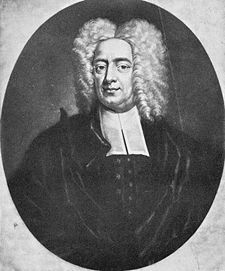
Cotton Mather
Philip Lee in his Against the Protestant Gnostics gives a humorous example of the gnostic streak in Cotton Mather.
I was once emptying the Cistern of Nature, and making Water at the wall. At the same Time, there came a Dog, who did so too, before me. Thought I; “What mean and vile Things are the Children of Men, in this mortal State! How much do our natural Necessities abase us and place us in some regard, on the Level with the very Dogs! . . . Accordingly, I resolved, that it should be my ordinary Practice, whenever I step to answer the one or other Necessity of Nature, to make it an Opportunity of shaping in my Mind, some holy, noble, divine Thought. (p. 131)
Lee points out that here we have a prominent Protestant theologian and pastor lamenting, in an overt mind-over-matter sort of way, not his sinfulness, but rather his humanity!
The Orthodox Repudiation of Platonic Dualism
While Orthodoxy has no formal definition like the Roman Catholic transubstantiation or the Lutheran consubstantiation, we find clear indications of belief in a localized real presence. This is strikingly clear in the Pre-Communion Prayer of John Chrysostom that Orthodox Christians recite just before receiving Communion:
I believe, O Lord, and I confess that You are truly the Christ, the Son of the living God, Who came into the world to save sinners, of whom I am first. I believe also that This is truly Your own most pure Body, and that This is truly Your own precious Blood. Therefore, I pray to you have mercy upon me and forgive my transgressions, both voluntary and involuntary, of word and of deed, committed in knowledge or in ignorance. And make me worthy to partake without condemnation of Your most pure Mysteries, for the remission of my sins, and unto life everlasting. Amen.
What comes across in this ancient pre-communion prayer is the sense of a convergence of two distinct realities in the Eucharist. In the Eucharist the earthly and heavenly converge — no Platonic dualism here! This understanding is evident in a prayer said by the priest prior to his receiving Communion:
Broken and distributed is the Lamb of God: Who is broken, yet not divided; who is eaten, yet never consumed; but sanctifies those who partake thereof.
Rather than attempt to explain this in terms of a detailed doctrine, the Orthodox prefer to see it as a mystery that transcends the laws of nature. If the loaves and fishes of Christ’s miracles transcended the laws of nature, there shouldn’t be any reasons why Reformed Christians should object to a local presence in the Lord’s Supper.
The Orthodox understanding of reality is shaped by the Incarnation. The divine condescension in which the Word became flesh upends the assumption of the need to ascend from mundane materiality to spiritual infinitude that underlies Platonic dualism. What we find in ancient Christianity and Orthodoxy today is the healing of the rift in the cosmos and the re-enchantment of a fallen creation. In the Incarnation the infinite Son of God is contained in the womb of a Virgin; the eternal Word becomes tangible flesh; the invisible God becomes visible and depictable; the gathering of believers becomes the Body of Christ; the waters of baptism becomes the laver of regeneration that we sink into becoming soaking wet; and the bread and the wine become the body and blood of Christ that we receive into our mouths “for the remission of sins and life everlasting.”
By denying or giving short shrift to the consecration of matter, Calvin undercut the place of sacraments in Christianity. He transformed an embodied Incarnation-based Christianity to an intellectualized Scripture-based Christianity.
Space, Time and Incarnation
I found T.F. Torrance’s Space, Time and Incarnation helpful for making sense of the philosophical issues underlying the competing positions on the real presence. Reading it has provided clues as to how the divergence between Eastern and Western theological traditions came about. Torrance notes that Latin Christianity assimilated the Greek idea of creation as receptacle which led to the understanding that supernatural grace was mediated through “ecclesiastical vessels and capable of being handed on in space and time by means of them” (p. 25). Torrance asserts that this receptacle view of creation led the medieval Catholic theologians and Luther into all sorts of conceptual difficulties. Torrance saw Anglican and Reformed theology standing much closer to the classical Patristic theology (p. 30). Patristic theology in contrast rejected the receptacle view and saw space instead as “the seat of relations or the place of meeting and activity in the interaction between God and the world” (p. 24). I find this claim dubious and wish he had given more attention to the Reformed position in his book.
Torrance criticized Luther for holding to an implicit monophysitism in his view of the real presence, but Calvin’s understanding can likewise be criticized for containing an implicit dyophysitism that is characteristic of Nestorianism. Calvin and Luther’s opposing views on the real presence seem to reflect the struggle among the Reformers to reject the extremes of the Catholic transubstantiation and recover the ancient patristic understanding. However, both sides went awry and fell short of their goals.
Is the Reformed Understanding of the Eucharist Nestorian?
Is the Reformed understanding of the real presence Nestorian? The Nestorian heresy is not an easy one to identify. One can emphatically affirm the enhypostatic unity of the two natures of Christ as did Calvin (2.14.4; Institutes 1960:486-487), but still be a de facto Nestorian. Oftentimes the points of contention are the implications or working out of the two-natures of Christ. Nestorius was condemned for his refusal to address Mary as the Theotokos (the God Bearer), apparently due to his reluctance to say that Mary was carrying God in her womb. His refusal to use the title Theotokos had significant theological implications; one of them being the implicit separating of Christ’s humanity from His divinity during His time in Mary’s womb. This doctrinal-liturgical controversy was settled decisively at the third and fourth Ecumenical Councils.
Apparently the tag “Nestorian” was used against Warren because of his (and the Reformed tradition’s) unwillingness to affirm that the bread and the wine become the body and blood of Christ in the Eucharist. For him and the Reformed churches, the bread and the wine down here remain as they were but because we are up in heaven we do truly feed on the body and blood of Christ. Unlike the memorialist position which posits a total disconnect between the earthly and the heavenly realities, the Reformed position posits an indirect connection – spiritual feeding — between the Communion table with the bread and wine and the Communion table in heaven. That indirect link is our faith in Christ and the grace of the Holy Spirit who elevates the believers to heaven. Calvin’s reluctance to affirm a localized real presence suggests there are two parallel realities in the Eucharist that don’t quite converge. This curious disjunction, based on the assumption of two parallel not quite convergent realities, suggests a dyophysitism that is characteristic of the Nestorian heresy. For that reason I believe there is validity to the criticism of Nestorianism made against Russ Warren and the Reformed tradition. This leads to the conclusion that the Reformed understanding of the real presence is at odds with the early church and historic Orthodoxy.
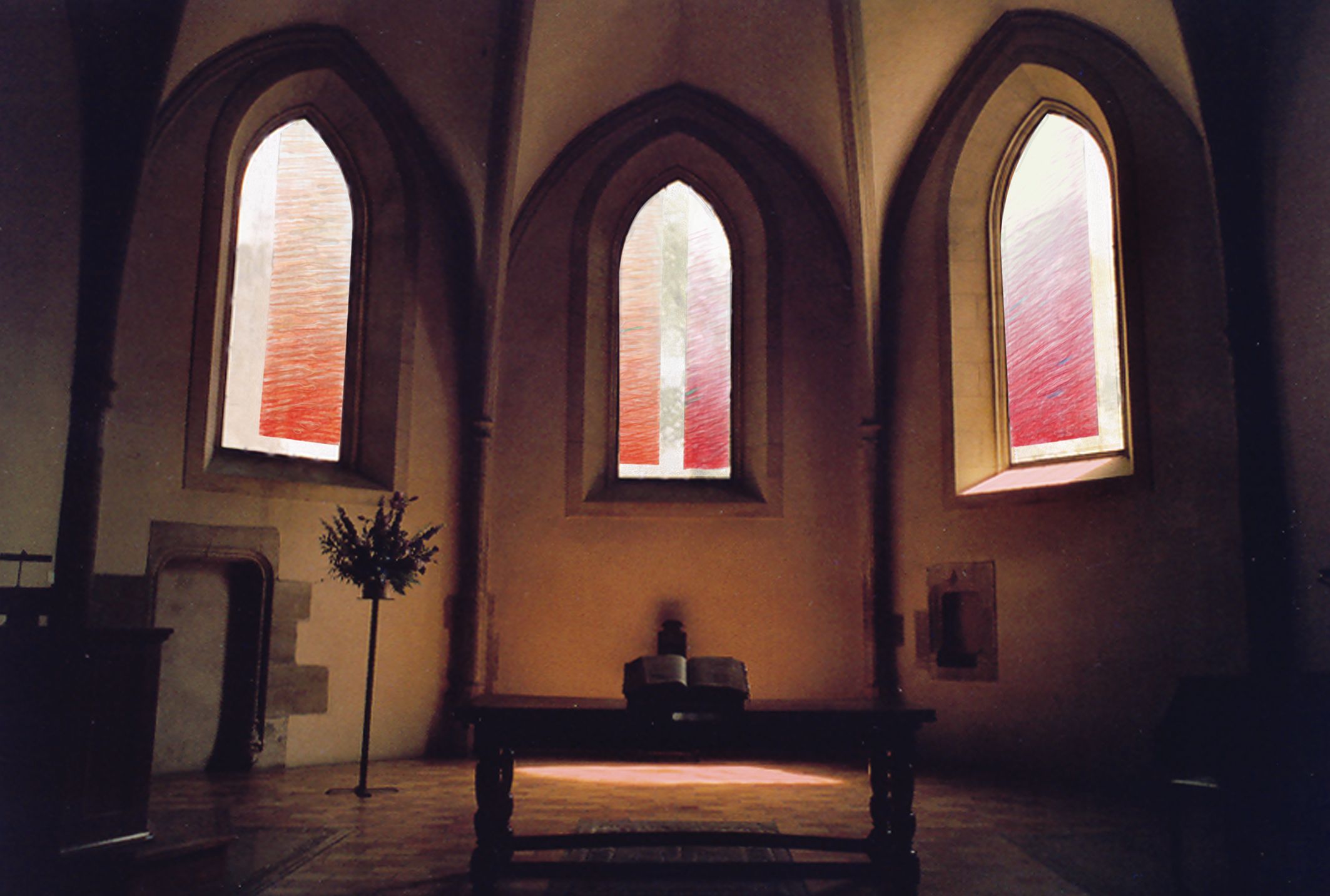
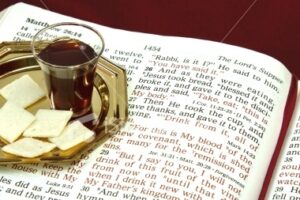
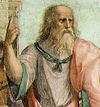
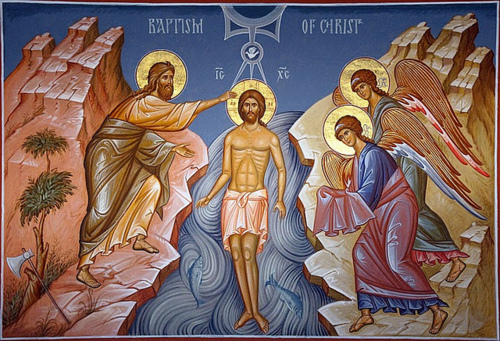
Recent Comments